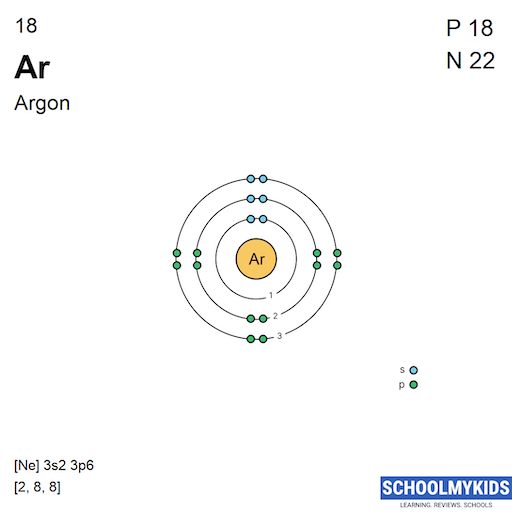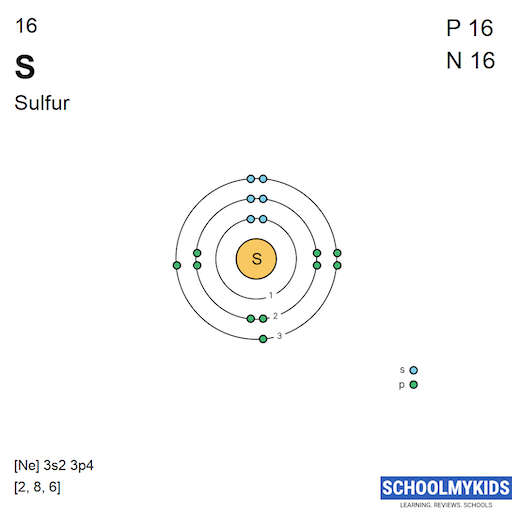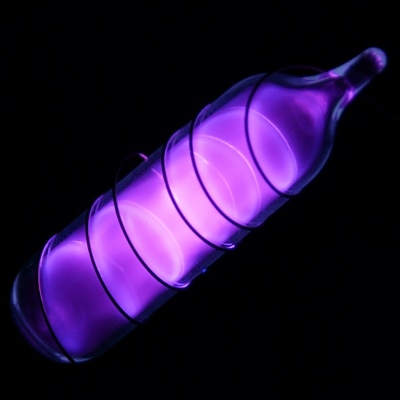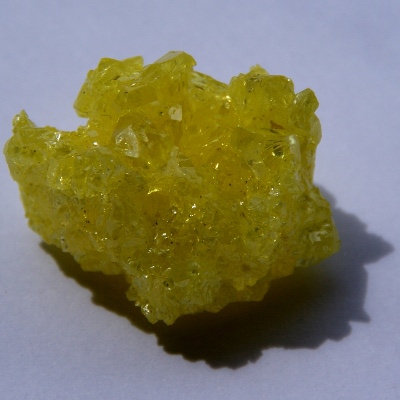Compare Argon vs Sulfur: Periodic Table Element Comparison Table and Properties
Compare the elements Argon and Sulfur on the basis of their properties, attributes and periodic table facts. Compare elements - Argon and Sulfur comparison table side by side across over 90 properties. All the elements of similar categories show a lot of similarities and differences in their chemical, atomic, physical properties and uses. These similarities and dissimilarities should be known while we study periodic table elements. You can study the detailed comparison between Argon vs Sulfur with most reliable information about their properties, attributes, facts, uses etc. You can compare Ar vs S on more than 90 properties like electronegativity, oxidation state, atomic shells, orbital structure, Electronaffinity, physical states, electrical conductivity and many more. This in-depth comparison helps students, educators, researchers, and science enthusiasts understand the differences and similarities between Argon and Sulfur.
Argon and Sulfur Comparison
Here's a detailed comparison between Argon (Ar) and Sulfur (S), focusing on their position in the periodic table, physical and chemical properties, stability, and uses.
Facts - Basic Element Details
| Name | Argon | Sulfur |
|---|---|---|
| Atomic Number | 18 | 16 |
| Atomic Symbol | Ar | S |
| Atomic Weight | 39.948 | 32.065 |
| Phase at STP | Gas | Solid |
| Color | Colorless | Yellow |
| Metallic Classification | Noble Gas | Other Nonmetal |
| Group in Periodic Table | group 18 | group 16 |
| Group Name | helium family or neon family | oxygen family |
| Period in Periodic Table | period 3 | period 3 |
| Block in Periodic Table | p -block | p -block |
| Electronic Configuration | [Ne] 3s2 3p6 | [Ne] 3s2 3p4 |
| Electronic Shell Structure (Electrons per shell) | 2, 8, 8 | 2, 8, 6 |
| Melting Point | 83.8 K | 388.36 K |
| Boiling Point | 87.3 K | 717.87 K |
| CAS Number | CAS7440-37-1 | CAS7704-34-9 |
| Neighborhood Elements | Neighborhood Elements of Argon | Neighborhood Elements of Sulfur |
History
| Parameter | Argon | Sulfur |
|---|---|---|
| History | The element Argon was discovered by Lord Rayleigh and W. Ramsay in year 1894 in United Kingdom. Argon derived its name from the Greek word argos, meaning 'idle'. | The element Sulfur was discovered by Chinese/Indians in year Before 2000 BCE. Sulfur derived its name from the Latin word sulphur, 'fire and brimstone'. |
| Discovery | Lord Rayleigh and W. Ramsay (1894) | Chinese/Indians (Before 2000 BCE) |
| Isolated | Lord Rayleigh and W. Ramsay (1894) | () |
Presence: Abundance in Nature and Around Us
Parts per billion (ppb) by weight / by atoms (1ppb =10^-7 %)
| Property | Argon | Sulfur |
|---|---|---|
| Abundance in Universe | 200000 / 6000 | 500000 / 20000 |
| Abundance in Sun | 70000 / 2000 | 400000 / 10000 |
| Abundance in Meteorites | - / - | 41000000 / 22000000 |
| Abundance in Earth's Crust | 1500 / 780 | 420000 / 270000 |
| Abundance in Oceans | 450 / 70 | 928000 / 179000 |
| Abundance in Humans | - / - | 2000000 / 390000 |
Crystal Structure and Atomic Structure
| Property | Argon | Sulfur |
|---|---|---|
| Atomic Volume | 22.4134 cm3/mol | 15.53 cm3/mol |
| Atomic Radius | 71 pm | 88 pm |
| Covalent Radius | 97 pm | 102 pm |
| Van der Waals Radius | 188 pm | 180 pm |
Atomic Spectrum - Spectral Lines | ||
| Emission Spectrum |  |  |
| Absorption Spectrum |  |  |
| Lattice Constant | 525.6, 525.6, 525.6 pm | 1043.7, 1284.5, 2436.9 pm |
| Lattice Angle | π/2, π/2, π/2 | π/2, π/2, π/2 |
| Space Group Name | Fm_ 3m | Fddd |
| Space Group Number | 225 | 70 |
| Crystal Structure | Face Centered Cubic  | Face Centered Orthorhombic  |
Atomic and Orbital Properties
| Property | Argon | Sulfur |
|---|---|---|
| Atomic Number | 18 | 16 |
| Number of Electrons (with no charge) | 18 | 16 |
| Number of Protons | 18 | 16 |
| Mass Number | 39.948 | 32.065 |
| Number of Neutrons | 22 | 16 |
| Shell structure (Electrons per energy level) | 2, 8, 8 | 2, 8, 6 |
| Electron Configuration | [Ne] 3s2 3p6 | [Ne] 3s2 3p4 |
| Valence Electrons | 3s2 3p6 | 3s2 3p4 |
| Oxidation State | 0 | -2, 2, 4, 6 |
| Atomic Term Symbol (Quantum Numbers) | 1S0 | 3P2 |
| Shell structure |  |  |
Isotopes and Nuclear Properties
Argon has 3 stable naturally occuring isotopes while Sulfur has 4 stable naturally occuring isotopes.
| Parameter | Argon | Sulfur |
|---|---|---|
| Known Isotopes | 30Ar, 31Ar, 32Ar, 33Ar, 34Ar, 35Ar, 36Ar, 37Ar, 38Ar, 39Ar, 40Ar, 41Ar, 42Ar, 43Ar, 44Ar, 45Ar, 46Ar, 47Ar, 48Ar, 49Ar, 50Ar, 51Ar, 52Ar, 53Ar | 26S, 27S, 28S, 29S, 30S, 31S, 32S, 33S, 34S, 35S, 36S, 37S, 38S, 39S, 40S, 41S, 42S, 43S, 44S, 45S, 46S, 47S, 48S, 49S |
| Stable Isotopes | Naturally occurring stable isotopes: 36Ar, 38Ar, 40Ar | Naturally occurring stable isotopes: 32S, 33S, 34S, 36S |
| Neutron Cross Section | 0.65 | 0.52 |
| Neutron Mass Absorption | 0.0006 | 0.00055 |
Chemical Properties: Ionization Energies and electron affinity
| Property | Argon | Sulfur |
|---|---|---|
| Valence or Valency | 0 | 6 |
| Electronegativity | - | 2.58 Pauling Scale |
| Oxidation State | 0 | -2, 2, 4, 6 |
| Electron Affinity | 0 kJ/mol | 200 kJ/mol |
| Ionization Energies | 1st: 1520.6 kJ/mol 2nd: 2665.8 kJ/mol 3rd: 3931 kJ/mol 4th: 5771 kJ/mol 5th: 7238 kJ/mol 6th: 8781 kJ/mol 7th: 11995 kJ/mol 8th: 13842 kJ/mol 9th: 40760 kJ/mol 10th: 46186 kJ/mol 11th: 52002 kJ/mol 12th: 59653 kJ/mol 13th: 66199 kJ/mol 14th: 72918 kJ/mol 15th: 82473 kJ/mol 16th: 88576 kJ/mol 17th: 397605 kJ/mol 18th: 427066 kJ/mol | 1st: 999.6 kJ/mol 2nd: 2252 kJ/mol 3rd: 3357 kJ/mol 4th: 4556 kJ/mol 5th: 7004.3 kJ/mol 6th: 8495.8 kJ/mol 7th: 27107 kJ/mol 8th: 31719 kJ/mol 9th: 36621 kJ/mol 10th: 43177 kJ/mol 11th: 48710 kJ/mol 12th: 54460 kJ/mol 13th: 62930 kJ/mol 14th: 68216 kJ/mol 15th: 311048 kJ/mol 16th: 337138 kJ/mol |
Physical Properties
Argon (0.001784 g/cm³) is less dense than Sulfur (1.96 g/cm³). This means that a given volume of Sulfur will be heavier than the same volume of Argon. Sulfur is about 109765.5 denser than Argon
| Property | Argon | Sulfur |
|---|---|---|
| Phase at STP | Gas | Solid |
| Color | Colorless | Yellow |
| Density | 0.001784 g/cm3 | 1.96 g/cm3 |
| Density (when liquid (at melting point)) | - | 1.819 g/cm3 |
| Molar Volume | 22.4134 cm3/mol | 15.53 cm3/mol |
Mechanical and Hardness Properties
| Property | Argon | Sulfur |
|---|---|---|
Elastic Properties | ||
| Young Modulus | - | - |
| Shear Modulus | - | - |
| Bulk Modulus | - | 7.7 GPa |
| Poisson Ratio | - | - |
Hardness - Tests to Measure of Hardness of Element | ||
| Mohs Hardness | - | 2 MPa |
| Vickers Hardness | - | - |
| Brinell Hardness | - | - |
Thermal and Electrical Conductivity
| Property | Argon | Sulfur |
|---|---|---|
Heat and Conduction Properties | ||
| Thermal Conductivity | 0.01772 W/(m K) | 0.205 W/(m K) |
| Thermal Expansion | - | - |
Electrical Properties | ||
| Electrical Conductivity | - | 1e-15 S/m |
| Resistivity | - | 1000000000000000 m Ω |
| Superconducting Point | - | - |
Magnetic and Optical Properties
| Property | Argon | Sulfur |
|---|---|---|
Magnetic Properties | ||
| Magnetic Type | Diamagnetic | Diamagnetic |
| Curie Point | - | - |
| Mass Magnetic Susceptibility | -6e-9 m3/kg | -6.2e-9 m3/kg |
| Molar Magnetic Susceptibility | -2.4e-10 m3/mol | -1.99e-10 m3/mol |
| Volume Magnetic Susceptibility | -1.07e-8 | -0.0000122 |
Optical Properties | ||
| Refractive Index | 1.000281 | 1.001111 |
Acoustic Properties | ||
| Speed of Sound | 319 m/s | - |
Thermal Properties - Enthalpies and thermodynamics
| Property | Argon | Sulfur |
|---|---|---|
| Melting Point | 83.8 K | 388.36 K |
| Boiling Point | 87.3 K | 717.87 K |
| Critical Temperature | 150.87 K | 1314 K |
| Superconducting Point | - | - |
Enthalpies | ||
| Heat of Fusion | 1.18 kJ/mol | 1.73 kJ/mol |
| Heat of Vaporization | 6.5 kJ/mol | 9.8 kJ/mol |
| Heat of Combustion | - | - |
Regulatory and Health - Health and Safety Parameters and Guidelines
| Parameter | Argon | Sulfur |
|---|---|---|
| CAS Number | CAS7440-37-1 | CAS7704-34-9 |
| RTECS Number | RTECSCF2300000 | {RTECSWS4250000, N/A, N/A, N/A, N/A, N/A} |
| DOT Hazard Class | 2.2 | 4.1 |
| DOT Numbers | 1951 | 1350 |
| EU Number | - | - |
| NFPA Fire Rating | - | - |
| NFPA Health Rating | - | - |
| NFPA Reactivity Rating | - | - |
| NFPA Hazards | - | - |
| AutoIgnition Point | - | - |
| Flashpoint | - | - |
Compare Argon and Sulfur With Other Elements
Compare Argon and Sulfur with other elements of the periodic table. Explore howArgon and Sulfur stack up against other elements of the periodic table. Use our interactive comparison tool to analyze 90+ properties across different metals, non-metals, metalloids, and noble gases. Understanding these differences is crucial for applications in engineering, chemistry, electronics, biology, and material science.
Compare Argon with all Group 18 elementsCompare Argon with HeliumCompare Argon with NeonCompare Argon with KryptonCompare Argon with XenonCompare Argon with RadonCompare Argon with Oganesson Compare Argon with all Period 3 elementsCompare Argon with AluminiumCompare Argon with PhosphorusCompare Argon with ChlorineCompare Argon with SulfurCompare Argon with MagnesiumCompare Argon with SiliconCompare Argon with Sodium Compare Argon with all Noble Gas elements | Compare Sulfur with all Group 16 elementsSulfur vs Selenium ComparisonSulfur vs Tellurium ComparisonSulfur vs Livermorium ComparisonSulfur vs Oxygen ComparisonSulfur vs Polonium Comparison Compare Sulfur with all Period 3 elementsSulfur vs Argon ComparisonSulfur vs Aluminium ComparisonSulfur vs Phosphorus ComparisonSulfur vs Chlorine ComparisonSulfur vs Magnesium ComparisonSulfur vs Silicon ComparisonSulfur vs Sodium Comparison Compare Sulfur with all Other Nonmetal elements |

